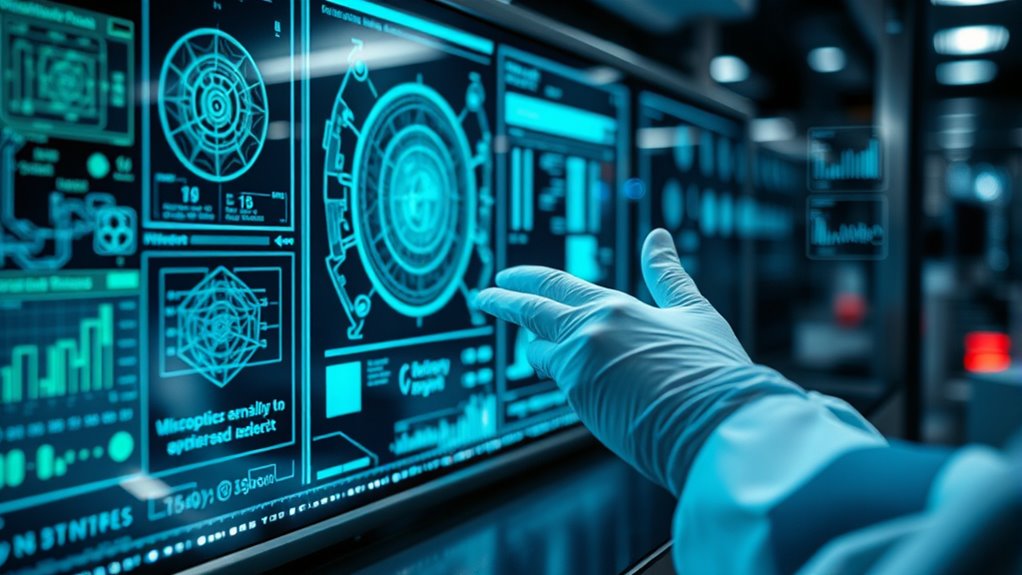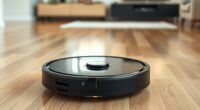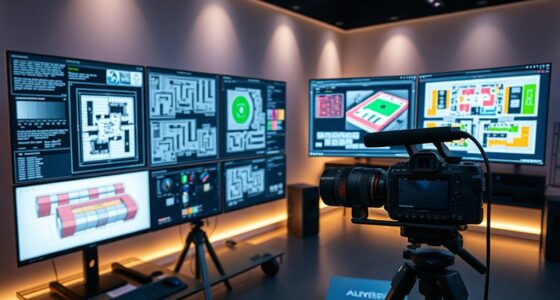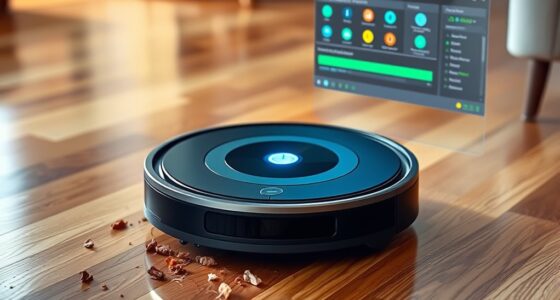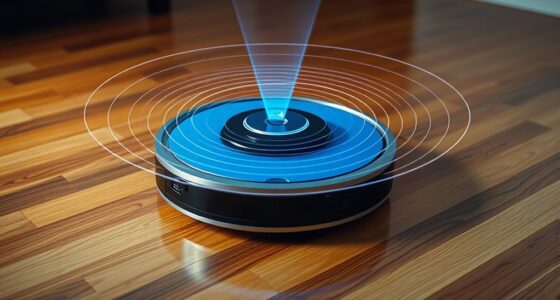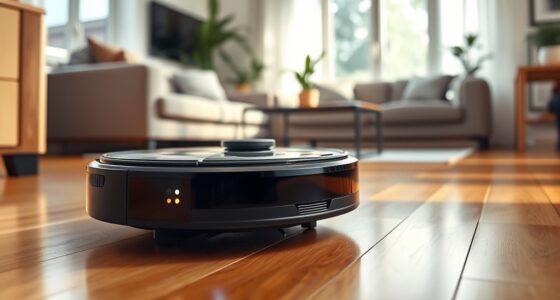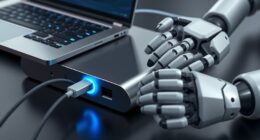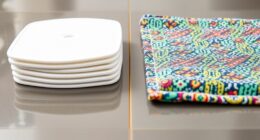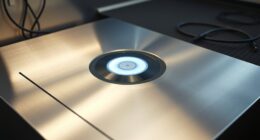The science behind dirt detection algorithms involves combining sensor calibration with machine learning techniques to accurately identify dirt and debris. Sensors are carefully calibrated to guarantee reliable data, accounting for environmental factors and sensor drift. Machine learning models analyze this data, often using multiple sensor types, to classify surfaces as clean or dirty. These systems adapt over time for improved precision, creating smarter cleaning solutions—if you want to understand how, there’s more to discover.
Key Takeaways
- Dirt detection algorithms analyze sensor data patterns to distinguish between clean and dirty surfaces accurately.
- Sensor calibration aligns sensor outputs with real-world conditions, ensuring reliable dirt detection.
- Machine learning models classify dirt presence by interpreting multiple sensor inputs, adapting to different environments.
- Calibration and model updates are essential to account for sensor drift, environmental changes, and new dirt types.
- Combining sensor data with advanced algorithms enables automated systems to optimize cleaning efficiency and resource use.

Dirt detection algorithms play an essential role in automating cleaning processes and maintaining hygiene across various industries. These algorithms rely heavily on sensor data to identify dirt, dust, or spills, guaranteeing cleaning efforts are precise and efficient. To achieve accurate readings, sensor calibration is fundamental. Proper calibration aligns sensor outputs with real-world conditions, minimizing errors caused by environmental factors or sensor drift. When sensors are correctly calibrated, they provide reliable data, which is indispensable for the algorithms to distinguish between clean surfaces and dirty spots. Without calibration, sensors might misinterpret signals, leading to missed dirt or unnecessary cleaning cycles, wasting time and resources.
In the domain of dirt detection, machine learning techniques have revolutionized how algorithms interpret sensor data. Unlike traditional rule-based systems, machine learning models can adapt and improve over time by analyzing patterns in the data. For instance, supervised learning algorithms are trained on labeled datasets that contain examples of clean and dirty surfaces. Once trained, these models can classify new sensor inputs with high accuracy, even in complex or noisy environments. This ability to learn from data makes dirt detection more robust, allowing robots and automated systems to operate effectively in diverse settings like hospitals, factories, or homes. Machine learning also enables the algorithms to consider multiple sensor inputs simultaneously—such as optical, infrared, or ultrasonic data—combining them to form a complete understanding of the surface conditions.
Furthermore, ongoing sensor calibration is essential to guarantee the machine learning models remain effective over time. As sensors age or environmental conditions change, recalibrating them helps maintain data quality, which directly impacts the model’s accuracy. Many advanced systems automate this calibration process, continuously adjusting sensor parameters based on feedback from the environment or from the machine learning model itself. This integration of sensor calibration and machine learning techniques creates a dynamic system capable of adapting to new dirt types, surface textures, and lighting conditions, guaranteeing consistent cleaning performance. Additionally, understanding the science of dirt detection algorithms aids in developing more innovative and efficient cleaning solutions.
Frequently Asked Questions
How Do Dirt Detection Algorithms Adapt to Different Floor Types?
You might wonder how dirt detection algorithms handle different floor types. They adapt through floor type adaptation, which adjusts their sensitivity based on the surface. Sensor calibration is key here, ensuring the sensors accurately interpret dirt signals regardless of material. By dynamically calibrating sensors for each floor type, the algorithm maintains effective dirt detection, providing consistent cleaning performance across carpets, tiles, or hardwood floors.
What Role Does Machine Learning Play in Dirt Detection Accuracy?
You rely on machine learning to improve dirt detection accuracy by constantly refining sensor calibration and data preprocessing. It analyzes patterns from sensor data, adjusting for variations in floor types and dirt levels. This enables your device to distinguish dirt more precisely, even in challenging conditions. Machine learning adapts over time, learning from new data, so your cleaning system becomes smarter and more effective at identifying dirt spots quickly and accurately.
Can Dirt Detection Algorithms Identify Specific Types of Dirt or Debris?
You might wonder if dirt detection algorithms can identify specific dirt types or debris. These algorithms use dirt classification techniques and debris differentiation methods to analyze sensor data, helping distinguish between different kinds of dirt or debris. While they excel at detecting the presence of dirt, identifying exact types is more complex and requires advanced models. So, with ongoing improvements, future algorithms could become better at specific dirt classification.
How Do Algorithms Handle False Positives in Dirt Detection?
Imagine your dirt detection system as a vigilant guard, constantly scanning your environment. When false positives pop up like false alarms, it adjusts through sensor calibration, fine-tuning its sensitivity. To prevent false alarm mitigation, the algorithm learns from past mistakes, refining its decisions. This way, your system stays sharp, accurately distinguishing real dirt from harmless debris, ensuring your cleaning process remains efficient and trustworthy.
What Are the Limitations of Current Dirt Detection Technologies?
You might find current dirt detection tech limited by sensor calibration issues, which can cause inaccuracies. Algorithm bias also affects performance, leading to false positives or missed dirt spots. These technologies struggle with diverse surfaces and lighting conditions, reducing reliability. While advancements are ongoing, these limitations mean you shouldn’t fully rely on them yet for precise cleaning. Improving sensor calibration and reducing algorithm bias remain key to enhancing their effectiveness.
Conclusion
Understanding the science behind dirt detection algorithms reveals their precision and potential. While some might doubt their reliability in complex environments, advancements in machine learning and sensor technology continually improve accuracy. By combining these innovations, you can trust these algorithms to deliver consistent results, even amidst challenging conditions. Embracing these tools not only enhances cleaning efficiency but also pushes the boundaries of automation, proving that dirt detection is more than just science — it’s a smart solution for the future.
